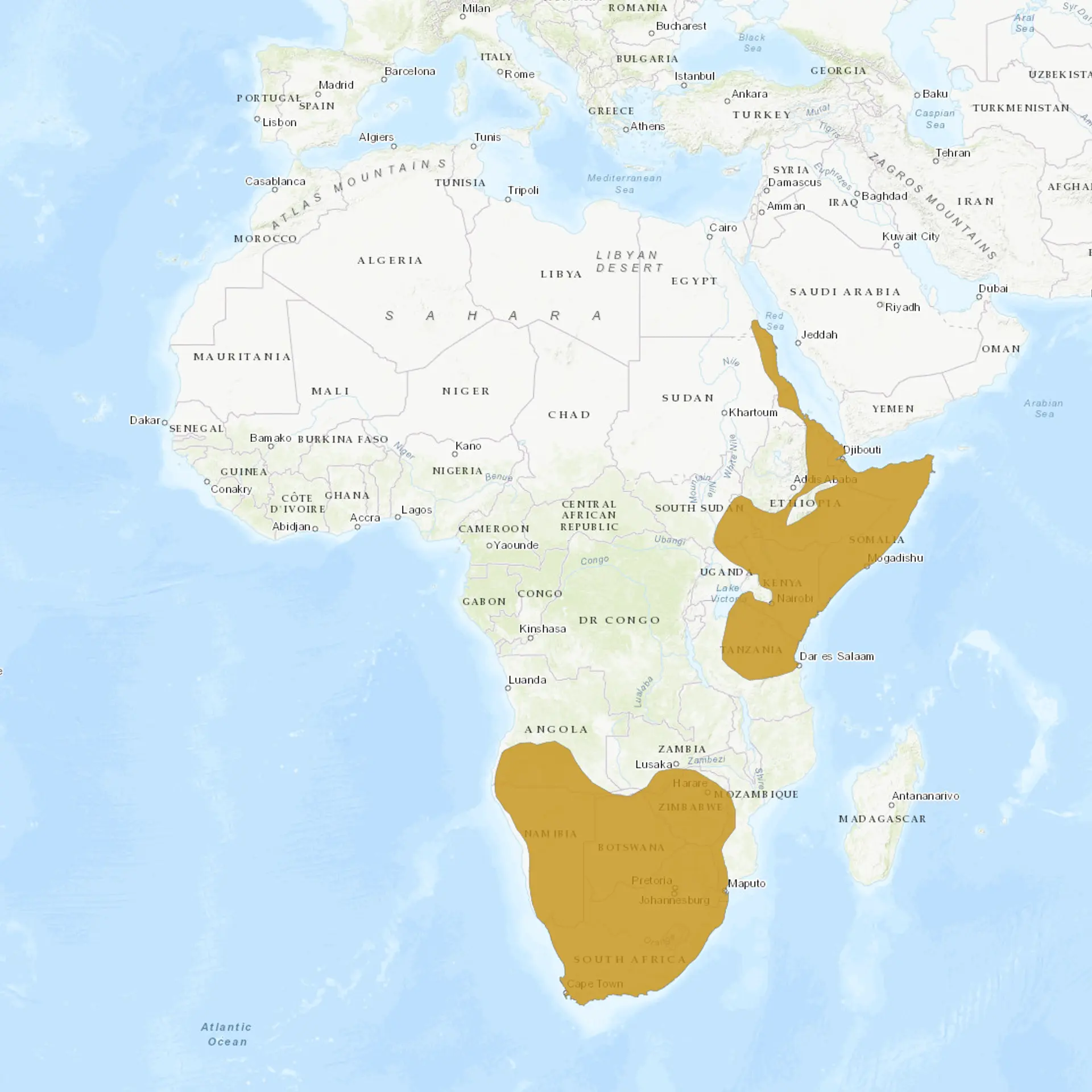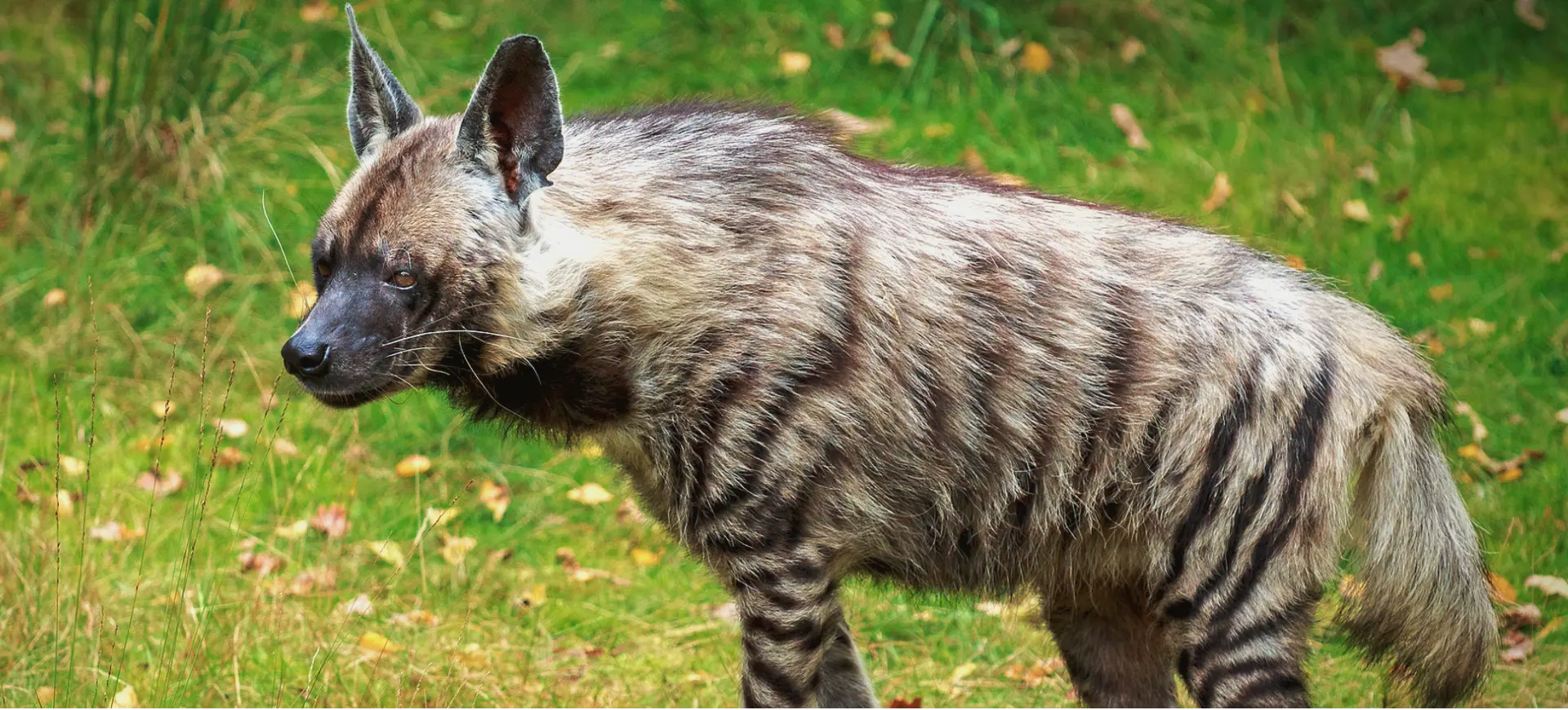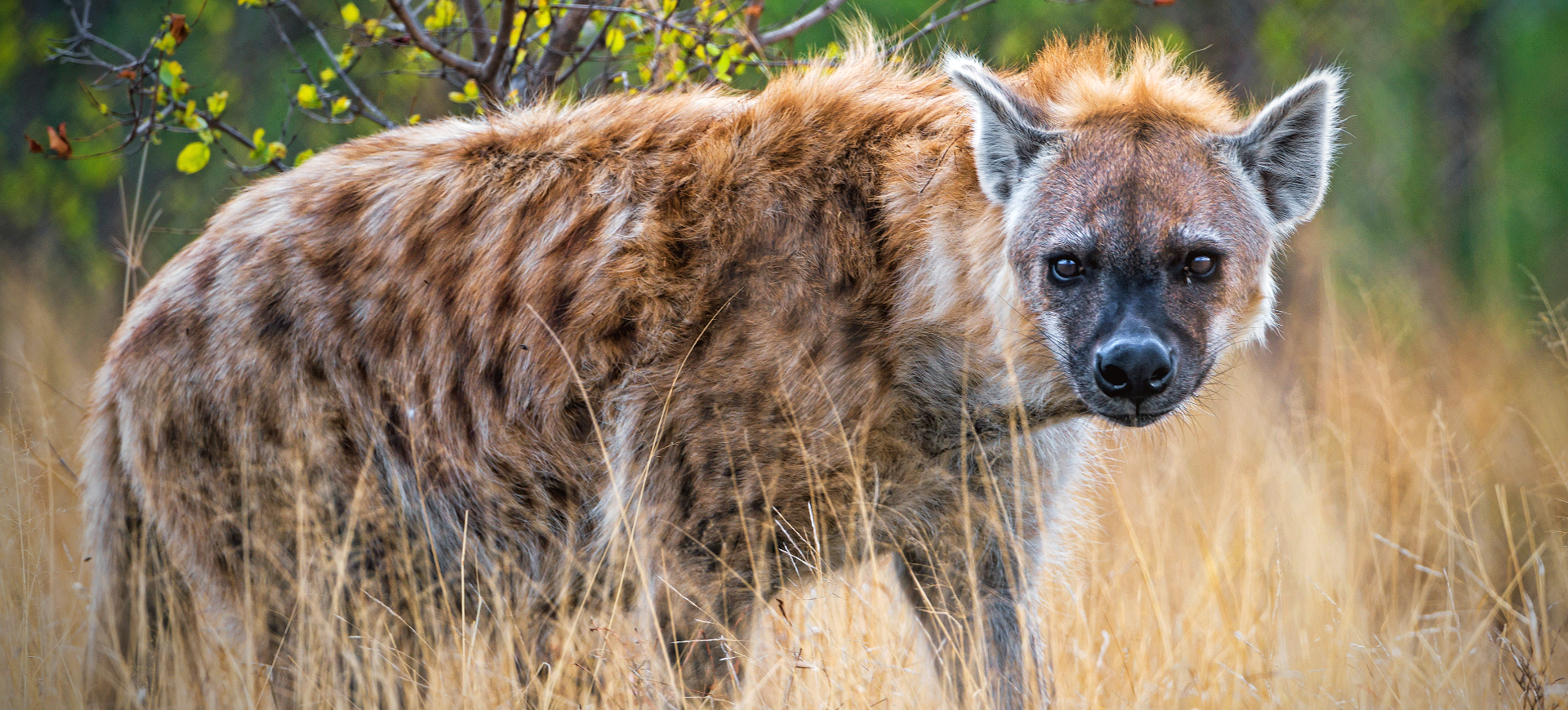Overview
The Aardwolf is a nocturnal mammal that belongs to the hyena family and is native to eastern and southern Africa. Unlike its more predatory relatives, the Aardwolf primarily feeds on insects, particularly termites. It has a slender body, a bushy mane running down its neck and back, and a distinctive black stripe pattern across its tan or yellowish-brown fur.
The Aardwolf’s appearance shares certain features with hyenas, such as a similarly shaped head and ears. However, it has a more delicate frame and lacks the powerful jaw muscles seen in hyenas that feast on carrion. Equipped with specialized cheek teeth, the Aardwolf is well-adapted for a diet predominantly consisting of termites, which it catches using its sticky tongue.
The Aardwolf is nocturnal and mostly solitary, with a tendency to mark its territory with secretions from its anal glands. During the day, it usually hides in burrows it has either dug itself or taken over from other animals like aardvarks. Nighttime is spent foraging, with its diet contributing to natural pest control.
Current distribution:
The Aardwolf is currently most populous in Kenya, Tanzania, Ethiopia, and South Africa. Though its distribution is relatively broad, the Aardwolf prefers specific ecosystems that support its specialized diet. It is rare to find the species in areas unsupportive of large termite populations.
The Aardwolf has been identified in protected reserves and human agriculture areas. Despite this, they are generally not considered pests and tend to stay away from areas of high human activity. Their presence is even considered beneficial, as they help control termite populations.
Physical Description:
The Aardwolf has a slender, fox-like body covered in coarse fur ranging from pale yellow to golden brown. It features distinctive black or dark brown stripes running vertically down its legs and horizontally across its back. The Aardwolf also sports a mane that runs from the back of the head down to the tail, which bristles when the animal feels threatened.
The animal’s muzzle is more pointed and narrow compared to other members of the hyena family. Its large, pointed ears provide acute hearing, beneficial for detecting predators and prey. Its legs are relatively short but strong enough to support the swift and agile movements necessary for capturing insects or escaping threats.

Lifespan: Wild: ~10 Years || Captivity: ~15 Years

Weight: Male: 17-21 lbs (7.7-9.5 kg) || Female: 15-19 lbs (6.8-8.6 kg)

Length: Male: 22-31 in (55-78 cm) || Female: 20-29 in (50-73 cm)

Height: Male: 16-20 in (40-50 cm) || Female: 15-19 in (38-48 cm)

Top Speed: 30 mph (48 km/h)
Characteristic:
Native Habitat:
The Aardwolf is native to eastern and southern Africa’s savannas and open plains. They are most commonly found in grasslands, which provide the best conditions for their primary food source, termites. They prefer areas with loose sandy soil, which makes it easier for them to dig burrows.
Its habitat ranges from Ethiopia and Somalia in the north to South Africa in the south. While it primarily lives in flat or gently undulating terrain, it can occasionally be found in more rocky or hilly areas. However, these are not its preferred environments due to the harder ground, making it difficult to dig burrows.
Biomes:
Biogeographical Realms:
Continents:
Diet:
Diet & Feeding Habits:
The Aardwolf’s diet primarily consists of termites, specifically the Trinervitermes and Hodotermes species. Its mouth is specialized for this type of diet, featuring weak jaws but a long, sticky tongue to lap up the insects. A single Aardwolf can consume up to 250,000 termites in one night, primarily using its keen sense of smell to locate them.
Unlike its hyena relatives, the Aardwolf does not scavenge for food or hunt large prey. When termites are scarce, they may consume other insects, larvae, or eggs. It has a relatively small home range, usually no more than a few square kilometers, which it patrols regularly to feed on termites.
Mating Behavior:
Mating Description:
During the mating season, generally during the early summer, male Aardwolves actively seek out females within their territory. They mark their territory with scent markings and vocalizations to attract potential mates. Mating usually occurs in the female’s burrow, which the male will temporarily share.
The female Aardwolf gives birth to two to four cubs after a gestation period of approximately 90 days. Cubs are born blind and are weaned at about three months of age. They start to accompany their parents on foraging trips, learning how to catch termites.
Reproduction Season:
Birth Type:
Pregnancy Duration:
Female Name:
Male Name:
Baby Name:
Social Structure Description:
The Aardwolf is primarily a solitary animal but is monogamous, often forming lifelong pairs. Within their shared territory, however, males and females typically forage separately. The territory is marked with scent markings from their anal glands to ward off intruders and establish boundaries.
Within their territories, Aardwolves may have multiple burrows. Family groups, which consist of a monogamous pair and their offspring, will live in these caves. Young Aardwolves will generally leave their parent’s territory after reaching sexual maturity, which occurs at around two years of age.
Groups:
Conservation Status:
Population Trend:
The Aardwolf is currently listed as Least Concern on the IUCN Red List, primarily due to its relatively stable population and wide distribution. It is not commonly targeted by hunters or poachers, mostly because it is not considered a problem animal, and its body parts are not typically used in traditional medicine.
While the overall population trend is stable, there is ongoing habitat loss due to agricultural expansion. Additionally, the Aardwolf can sometimes fall victim to traps set for other animals, although this is not a significant threat to the overall population. Natural predators include larger carnivores like lions, hyenas, and leopards, but these interactions are relatively rare.
Population Threats:
The Aardwolf population’s main threat is habitat degradation and loss, primarily from agricultural expansion and human settlement. The conversion of natural grasslands into farmland can deplete the termite populations Aardwolves rely on for sustenance. Additionally, pesticide usage can also indirectly affect their food supply.
Another concern is inadvertent trapping or poisoning when pesticides or traps for other species affect the Aardwolf. However, these threats are currently considered minimal compared to other African mammals’ risks. Large predators like lions and hyenas can pose a risk, but generally, Aardwolves are not prime targets for these carnivores.
Conservation Efforts:
Conservation efforts for the Aardwolf are minimal but include habitat preservation and education. Because the species is not currently at high risk, it often benefits indirectly from conservation efforts aimed at other, more threatened species that share its habitat. Protected reserves that prohibit hunting and restrict land development benefit the Aardwolf.
Additionally, educational initiatives aim to inform local communities about the ecological benefits of the Aardwolf, including its role in natural pest control. While not a primary focus of conservation organizations, the Aardwolf benefits from broader ecological protection efforts.
Additional Resources:
Fun Facts
- Aardwolves can eat up to 250,000 termites in one night.
- Unlike other hyenas, Aardwolves do not have strong jaws and cannot crush bone.
- They have a mane that bristles when they feel threatened, making them appear larger.
- Aardwolves are monogamous and often form lifelong pairs.
- They have large, pointed ears that give them excellent hearing.
- Aardwolves mark their territory with scent from their anal glands.
- They are primarily nocturnal and spend their days in caves.
- The Aardwolf’s tongue is specially adapted to lap up termites.
- Despite being part of the hyena family, they are not scavengers.
- Their name, “Aardwolf,” translates to “earth wolf” in Afrikaans and Dutch.











